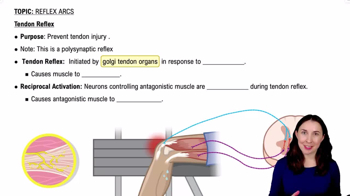Which of these thigh muscles causes movement at the hip joint?
a. Rectus femoris
b. Biceps femoris
c. Vastus lateralis
d. Semitendinosus
 Verified step by step guidance
Verified step by step guidance Verified video answer for a similar problem:
Verified video answer for a similar problem:



 5:39m
5:39mMaster Origin and Insertion with a bite sized video explanation from Bruce Bryan
Start learning